I’m on a quest to catch a fish in each of the 50 U.S. states – and to use each adventure as a means to explore conservation, the latest fisheries research and our complicated connections to the natural world.
I glance back and forth between the stream pool and my fly box. This felt like my last chance at catching a Colorado River cutthroat trout. I had already fished this pool once, hooked my only fish of the day, and lost it.
After fishing some other water for 30 minutes, I’m back, hopeful the fish will give me one more chance.
I’m in Wyoming with my friend Brett Prettyman, a communications director for Trout Unlimited, to check out cutthroat fishing and conservation. The Colorado River cutthroat trout is the only one of Wyoming’s cutthroat subspecies I haven’t caught. We spent the day on one of the best-known creeks for this fish, but the cutthroats have remained elusive.
I don’t need a fish to make the day worthwhile. We’ve seen moose browsing in willows. The scenery is spectacular. Any day spent wet wading and busting brush in search of native fish is special. Most of all, I got to spend time chatting along the stream bank (6 feet apart, of course) with a good friend, an all-too-rare treat in this socially distant year.
Still, I’m an angler at heart and I want to catch a fish. I can still see that cutthroat slipping the hook. One more chance.
I’m procrastinating the cast, staring at my fly box. Brett notices my indecision. “Pick something special,” he says.
And then it clicks. I pull out Uncle Bill’s beadhead nymph.
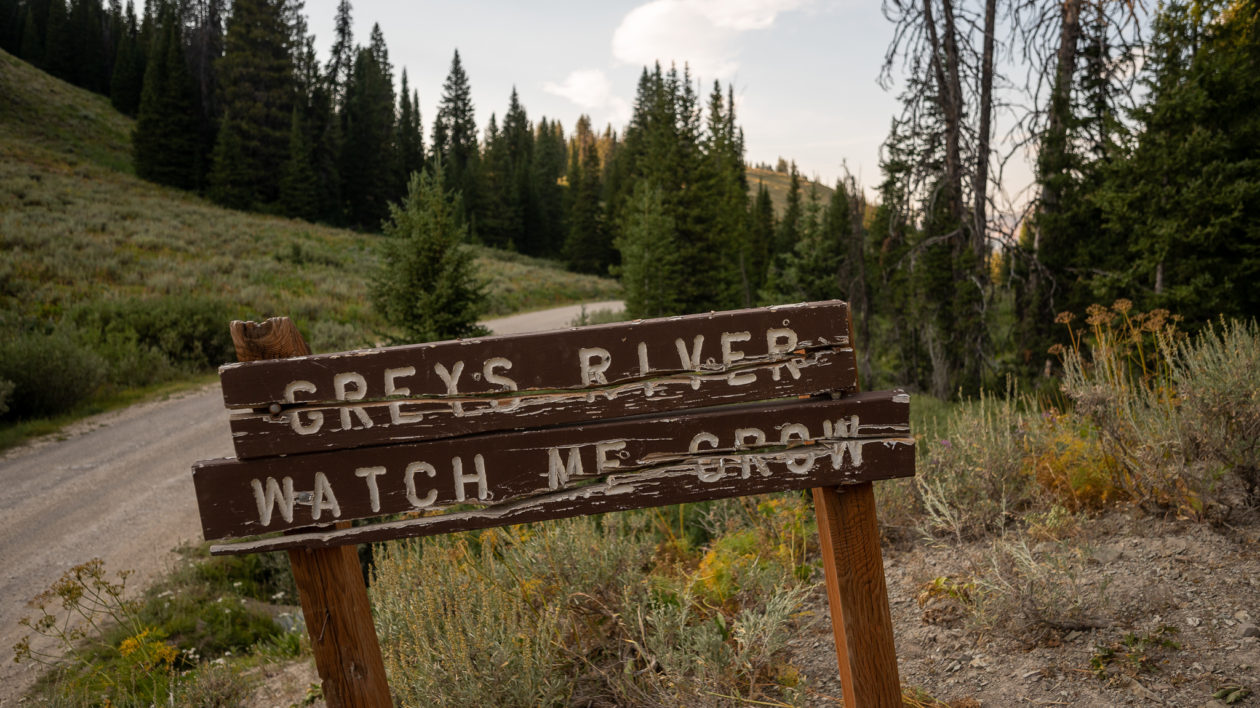
Headwater Country
Brett and I are exploring Wyoming’s Tribasin Region, a special area for my favorite fish, cutthroat trout. I love cutthroat trout because they are the embodiment of the Western United States’ tumultuous geology and geography. As mountains lifted, as massive floods cut rocky canyons, cutthroat trout populations were isolated from each other.
They evolved into different subspecies and strains. You might find a massive cutthroat in an alkaline Nevada lake, or a dainty, colorful one in a willow-lined Idaho stream. Some thrive on the coast and others in high desert trickles.
And perhaps no place better epitomizes the cutthroat’s diversity than Wyoming’s Tribasin region. In the Bridger-Teton National Forest of southeastern Wyoming, the headwaters of three major Western watersheds – the Snake, the Colorado River and the Bear River lie within miles of each other.
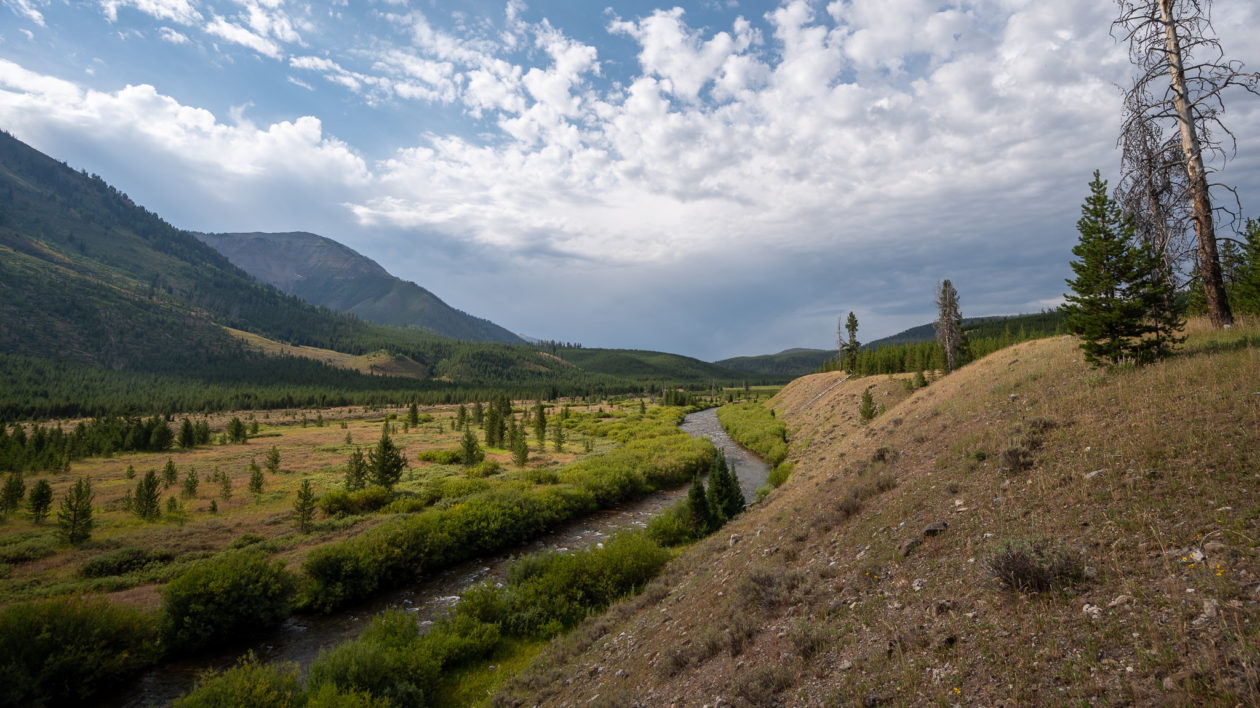
“You could have rain drops landing within a half mile of each other that could go in three very different directions,” says Patrick Barry, forest and fisheries biologist for Bridger-Teton National Forest. “One drop could end up in the Pacific, one in the Gulf of California, one in the Great Salt Lake.”
Despite the proximity, the streams flowing into each watershed have their own cutthroat subspecies. For a cutthroat enthusiast, like me, it’s paradise.
Cutthroat trout have been eliminated from much of their habitat in the West due to the stocking of non-native fish in their waters (fish that hybridize with them or outcompete), habitat degradation and other factors. The Tribasin is not immune to such threats, but due to its remoteness and extensive public lands, cutthroat trout waters here are healthy and resilient.
Cutthroats also need waters that are connected to each other, enabling the fish to not only migrate but exchange genes.
The Tribasin’s rivers and streams are not blocked by many dams, like in many other parts of the cutthroat’s range. But prime cutthroat range is cut off to fish due to another obstruction: roads.
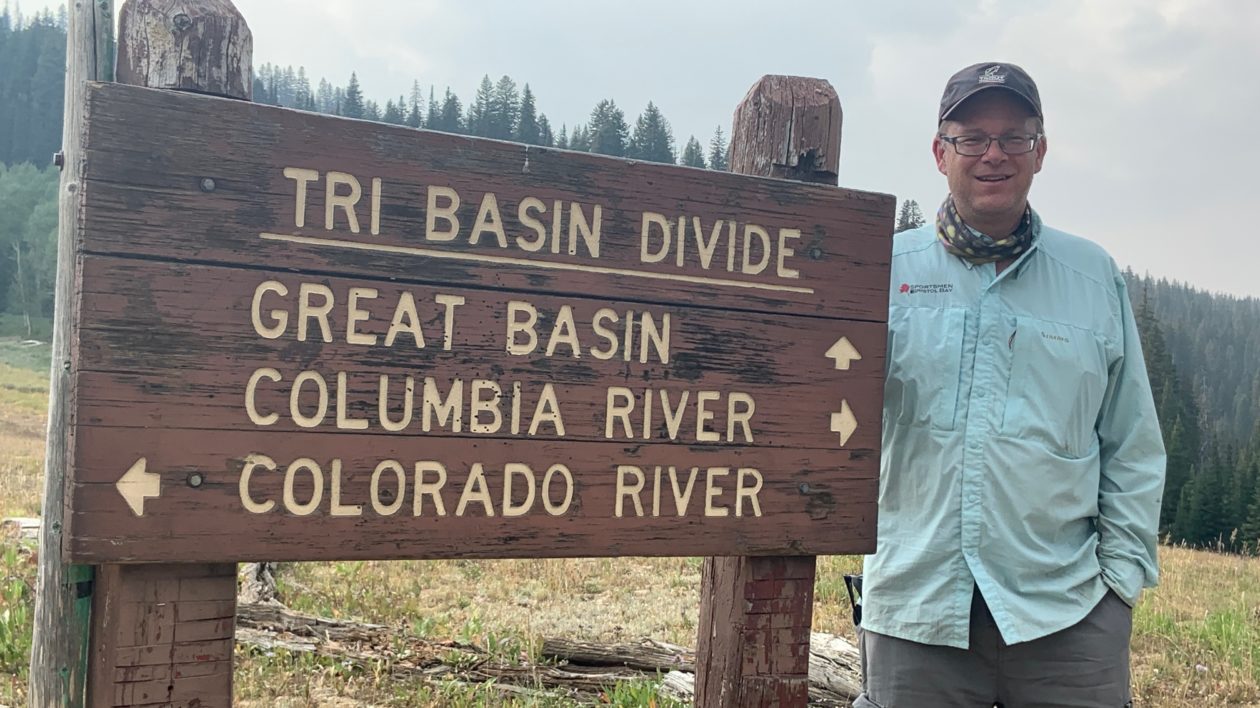
How Did the Fish Cross the Road?
Anglers driving the bone-jarring dirt roads of the Tribasin this summer may have been surprised to see a full suite of construction equipment, seemingly in the middle of nowhere. I saw some of the quizzical looks when I visited the site. What could they be building here?
The project was located along a tributary of the Greys River, a water known for its Snake River fine-spotted cutthroat trout. “This region is the stronghold of the Snake River fine-spotted cutthroat trout,” says Leslie Steen, Northwest Wyoming project director for Trout Unlimited. “If we lose them here, we lose the source population. We know these fish move around, a lot.”
That is, unless they are blocked from moving. The most obvious culprits are road culverts that can be undersized (which means the water blasts out at higher velocities) or have too steep of a gradient for fish to navigate.
For the past two years, Trout Unlimited and Bridger-Teton National Forest have been replacing culverts through the Tribasin Fish Passage and Watershed Restoration Project. The project reconnects tributary streams to the Greys River, allowing fish passage while also improving water quality.
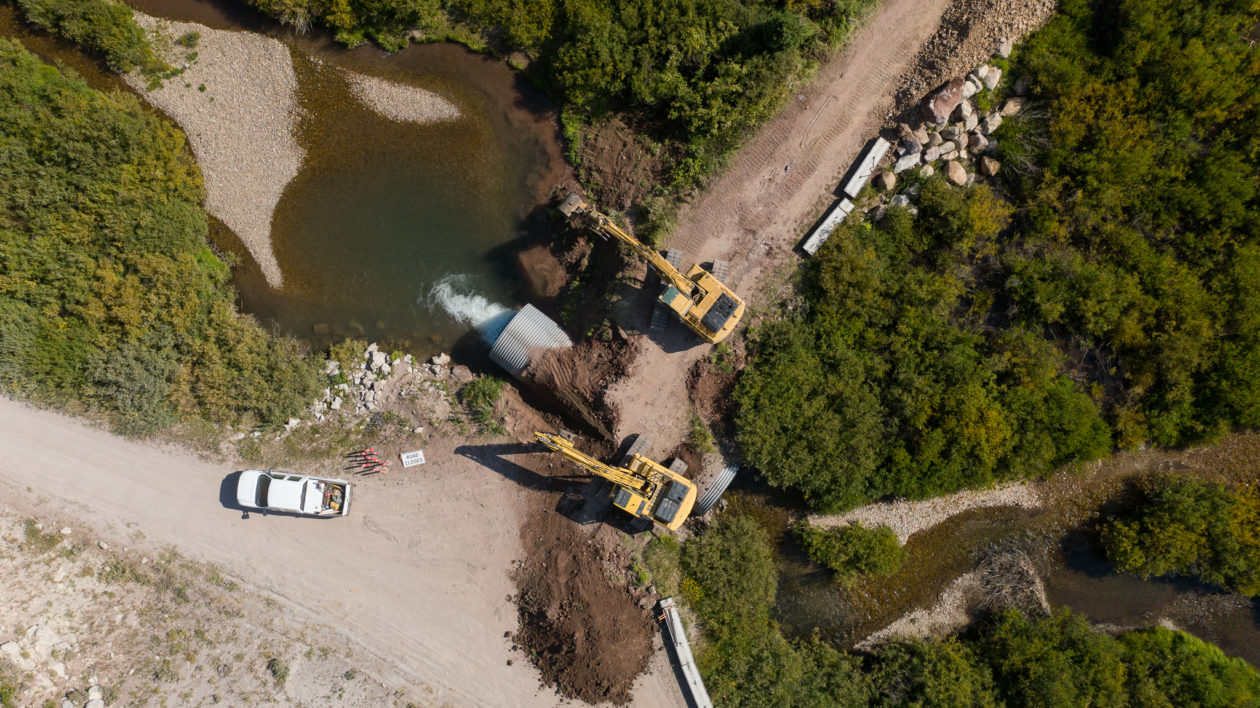
“A lot of these culverts were built 50 years ago,” says Steen. “They worked for flows then, but flows have changed. They no longer work for 2020. We are designing culverts that allow fish to pass, now and in the future.”
The Snake River fine-spotted cutthroat trout has a healthy population, and due to projects like this also has a much brighter future than many native trout species and subspecies. Climate projections show that 78 percent of cutthroat trout habitat could be lost due to warming waters. But cutthroats that can move to higher elevations are projected to fare much better.
“Connectivity is a huge component of climate resilience,” says Anna Senecal, aquatic habitat specialist for the Wyoming Game and Fish Department. “There are tributaries that are too cold for cutthroat trout right now, but that will be able to support those fish in 50 to 100 years. And now those fish will be able to reach them.”
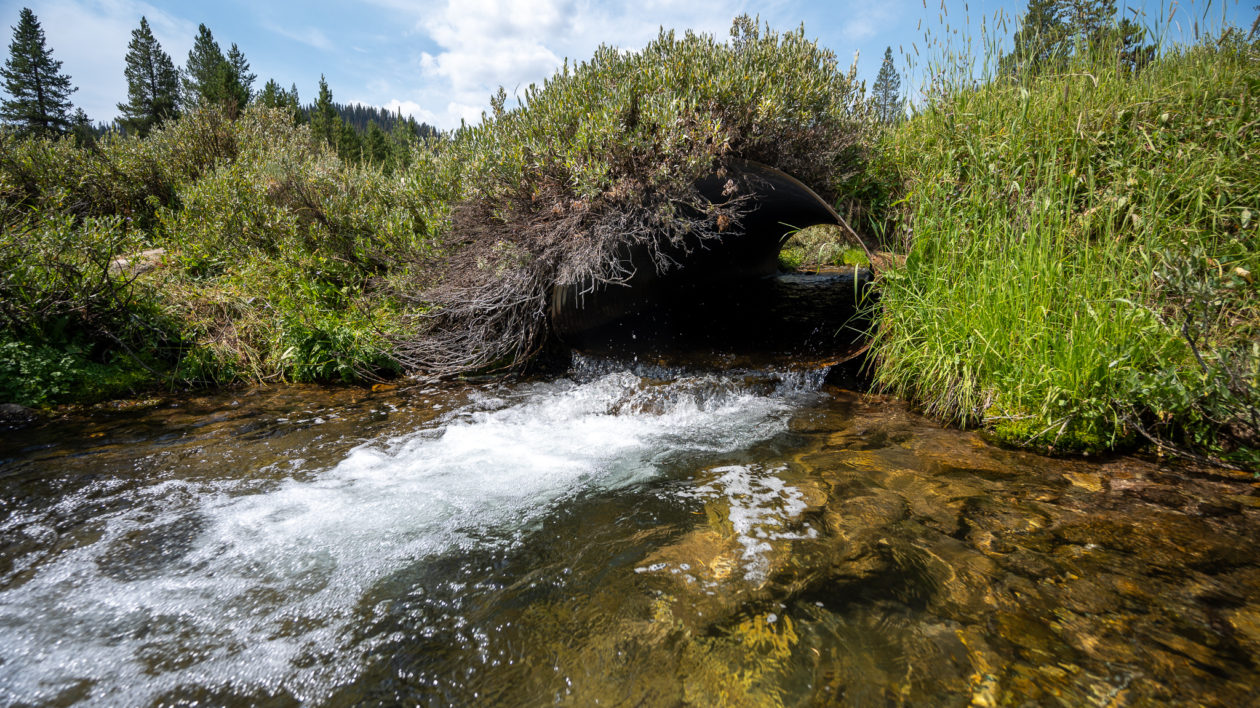
Cutt Slam
If there’s anyone who knows the value of connection for native fish, it’s my friend Brett Prettyman. Like most fish conservationists, he understands well the importance of connecting tributary streams and rivers. But he also recognizes another connection that needs to be made: connecting anglers to the work. And, a lot of the time, that happens through fishing.
Many anglers might drive by a Greys River reconnection project and just see the earth-moving equipment. They don’t necessarily have to know what’s going on. But they do need to appreciate native trout.
For a long time, anglers largely believed “a trout is a trout.” Many even liked non-native trout better than the natives. But groups like Trout Unlimited have been educating anglers on the uniqueness and beauty of cutthroats.
One of the efforts to generate more support and awareness is called the Cutt Slam. In Wyoming, an angler who catches four subspecies of cutthroat – the Snake River fine-spotted, Colorado River, Bonneville and Yellowstone – receives a special “Cutt Slam” medallion, certificate and bragging rights.
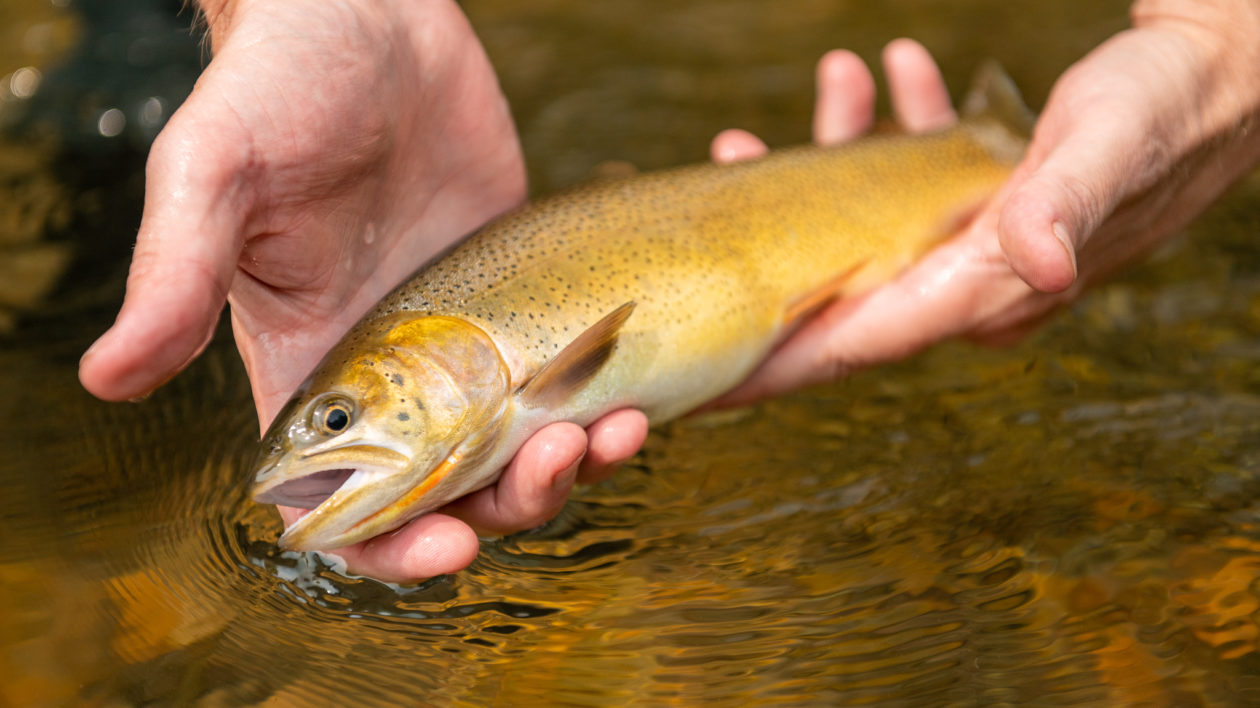
While some might argue these fish should be appreciated in their own right and not as a prize, the fact remains that the Cutt Slam is a fishing challenge that brings you up close with native fish—and their habitat. It is nearly impossible to complete the slam without gaining an appreciation for the conservation of these fish.
Brett advocated for and then launched another Cutt Slam program in his home state of Utah. The program he conceived includes a participation fee that goes directly to fish conservation. Since its inception three years ago, it has raised $53,000 for native trout conservation. More than 2,800 people have registered for the slam and nearly 700 have completed it.
Pursuing native trout is one of my favorite things. I love the varied waters these fish are found, their beautiful colors, the way they smack a dry fly with reckless abandon. I’ve caught three of the Wyoming Cutt Slam’s four fish. On this trip to the Tribasin, I was able to target three subspecies in two days. After Brett and I looked at the river reconnection, we fished the Greys River and caught Snake River fine-spotted cutthroats.
One afternoon, we cast little dries to small, spunky Bonneville cutthroat. Most barely smacked the fly, resulting in plenty of action but few hookups. Still we landed a couple fish each.
But the Colorado River cutthroat was the one I hadn’t caught. And that one was proving tricky.
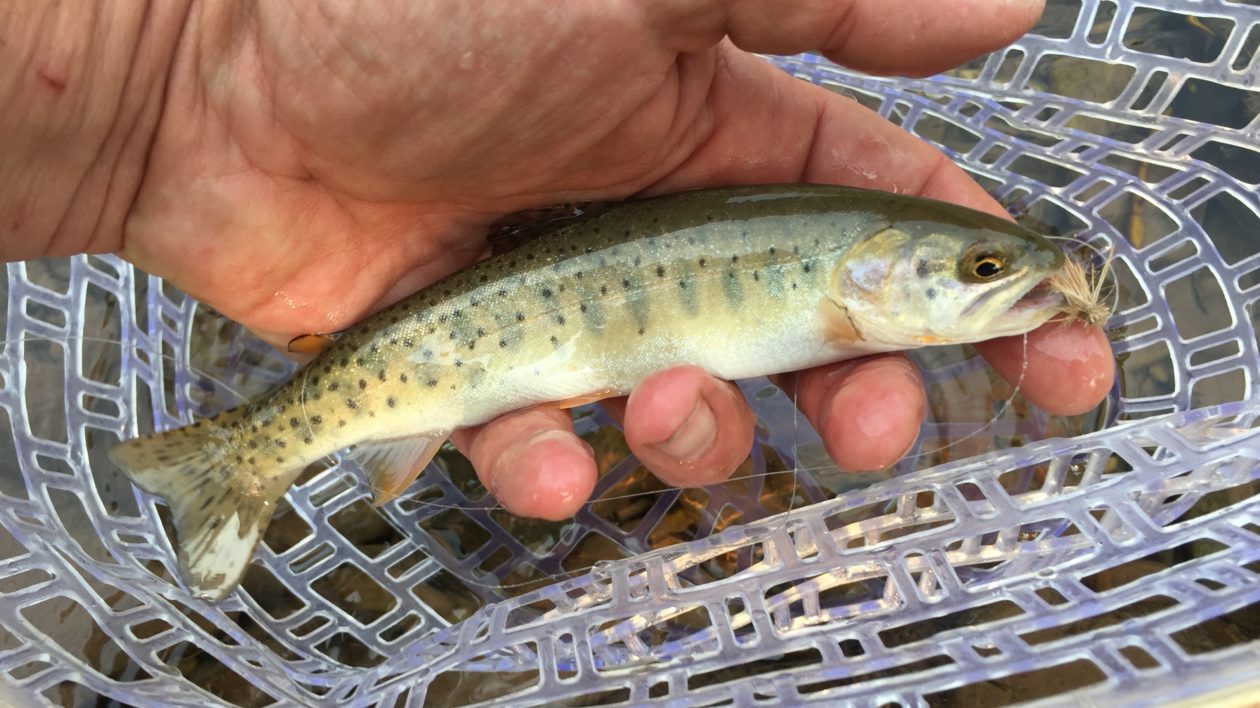
A Cutthroat for Uncle Bill
The stream we tried for Colorado River cutthroats had suffered from non-native fish introductions in the past. In fact, cutthroat trout were largely gone from it until a few years ago. Conservationists removed non-native species from the stream, preparing for a native cutthroat reintroduction. In this case, perhaps ironically, a large barrier had to be constructed on the stream to prevent non-native fish from recolonizing it.
Native fish were stocked, and by most reports, thriving. But Brett and I struggle to find any. No splashy strikes of our dry fly. No fish darting away as we waded. But we both love to fish, and we keep casting.
When I finally hook a fish and it shakes off, I am mentally kicking myself in that way all anglers know. But Brett silences the voice in my head. “Let it rest, and we’ll go back and try again,” he says.
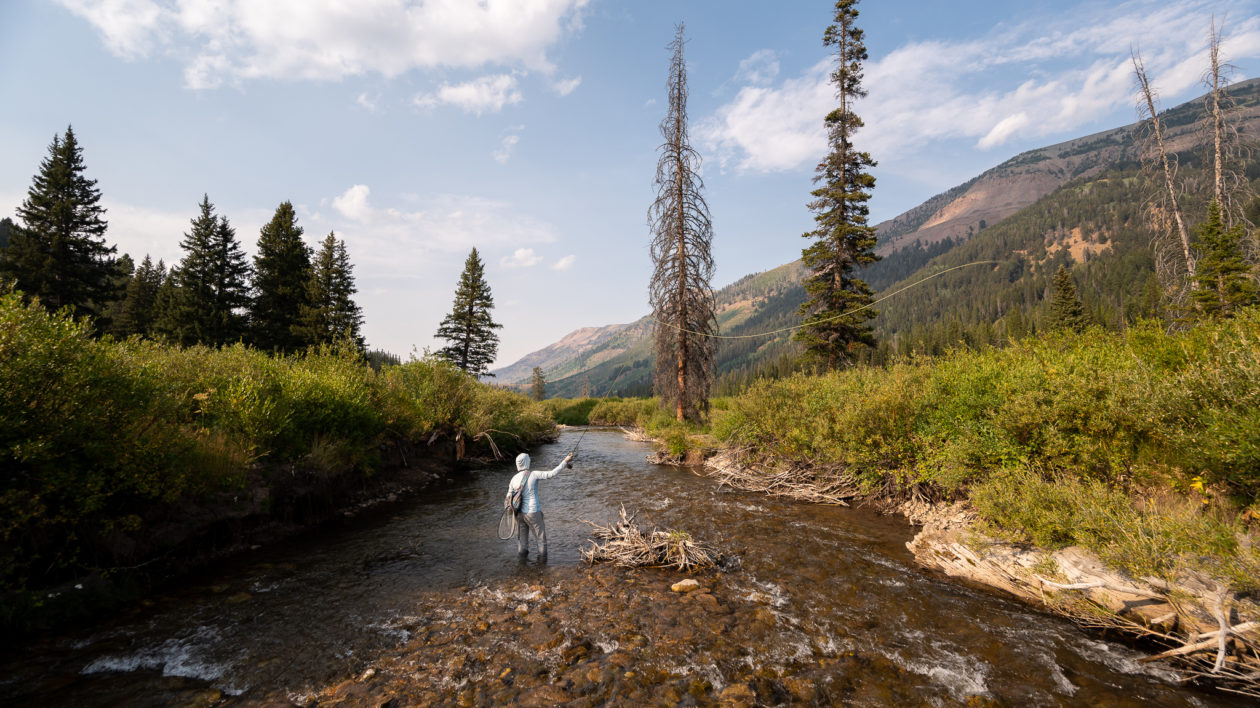
And we’re back, when he tells me to tie on a special fly. And this makes another kind of connection, this one in my head: right back to January of this crazy year. At the end of that month, I spoke at a forestry conference in State College, Pennsylvania, coincidentally the town where I went to college and then worked in my first professional job. My visit enabled me to cram in time with family and friends.
On the last day, I went fishing with my Aunt Linda and Uncle Bill Bressler on nearby Spruce Creek. Uncle Bill is one of the most enthusiastic fly anglers I know. He would live on a trout stream if he could. On that day, he gave me a couple of new flies he tied, nymph flies with a jig-like bead head, and a collar of bright pink fur. They worked for us on Spruce Creek, and I tucked them away for the right occasion.
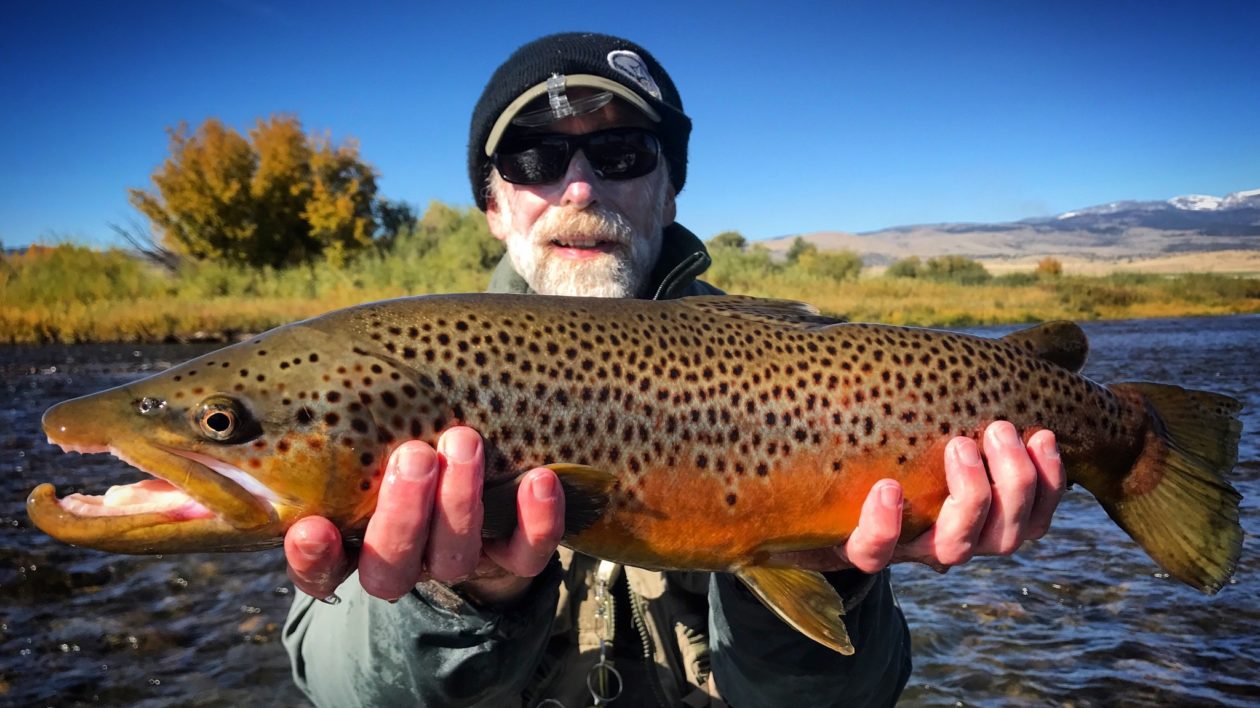
Uncle Bill’s 2020 took a bad turn before it did for the rest of us. A couple weeks after my visit, coughing caused a tear in his throat, which then became infected. He was in the hospital for many weeks. This became even more complicated when the pandemic hit. He lost weight. He weakened. He was not able to get on the trout stream.
It’s not exactly anything new to say that, for millions of enthusiasts, fishing is our escape. And it’s an escape that functions on connections: connected waters, yes, but also the connections to friends and family and fish.
I tie Uncle Bill’s nymph trailing behind a foam hopper. I tell Brett the story. “This is going to work,” he says, matter of factly.
And it does. Just like that. One cast, and the indicator fly dips under. I lift up and have a bright, beautiful Colorado River cutthroat trout on my line. A couple of minutes later, the fish is netted. A beautiful, native fish, made possible by the actions of conservationists. And also because the people we spend time with on rivers matter.
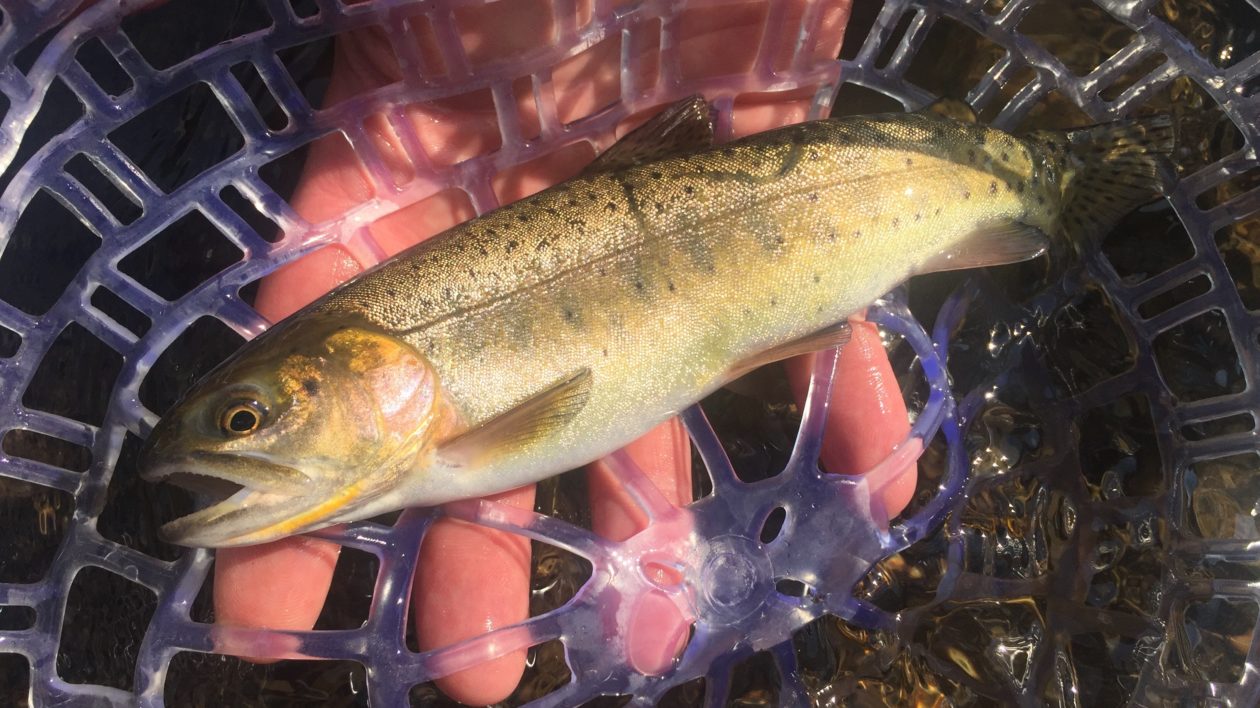
“Here’s to your uncle Bill,” says Brett, as I slide the fish back into the water.
And then the only sound is the trickling current, as our thoughts swirl to the creek and the fish and friendship and the people we can’t be with right now.
I’m always one to take “one more cast,” but today this is enough. More than enough. I hook Uncle Bill’s fly to my rod as we turn up the trail, the creek still bubbling behind us.
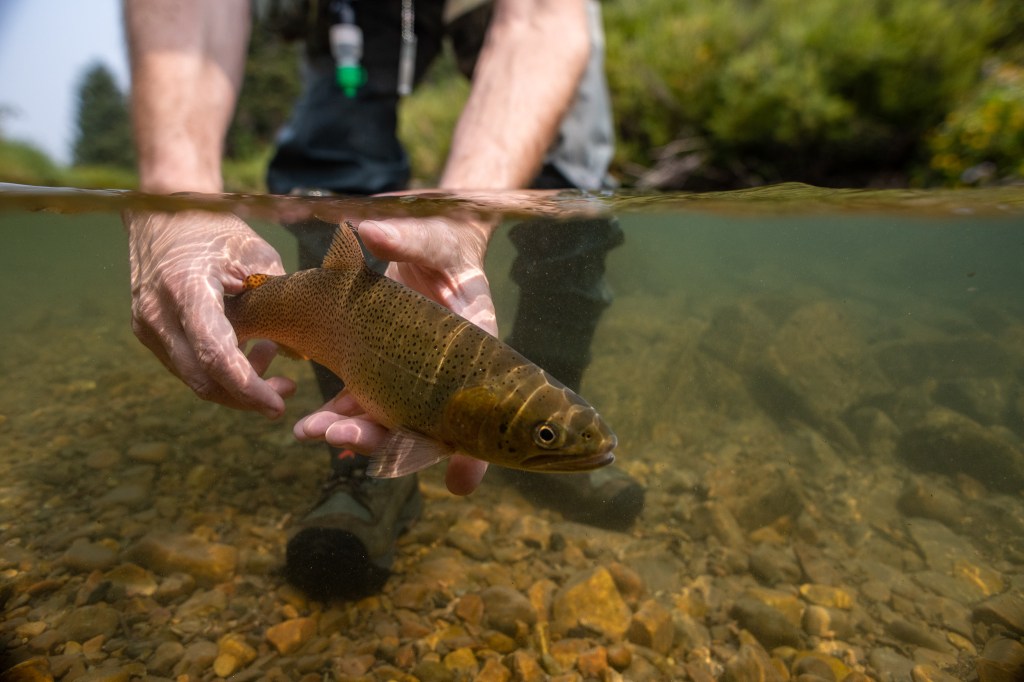



You are such a good writer! I feel like I have been trout fishing.
I am so pleased to learn that accommodations are now being made for wildlife when we intrude in to their habitat. It’s only right and fair. We are THE invasive specie. The fact that we share this planet seems to be dawning on us, finally.
Another great story, Matt. Capturing the many connections we get from fishing. Thank you.